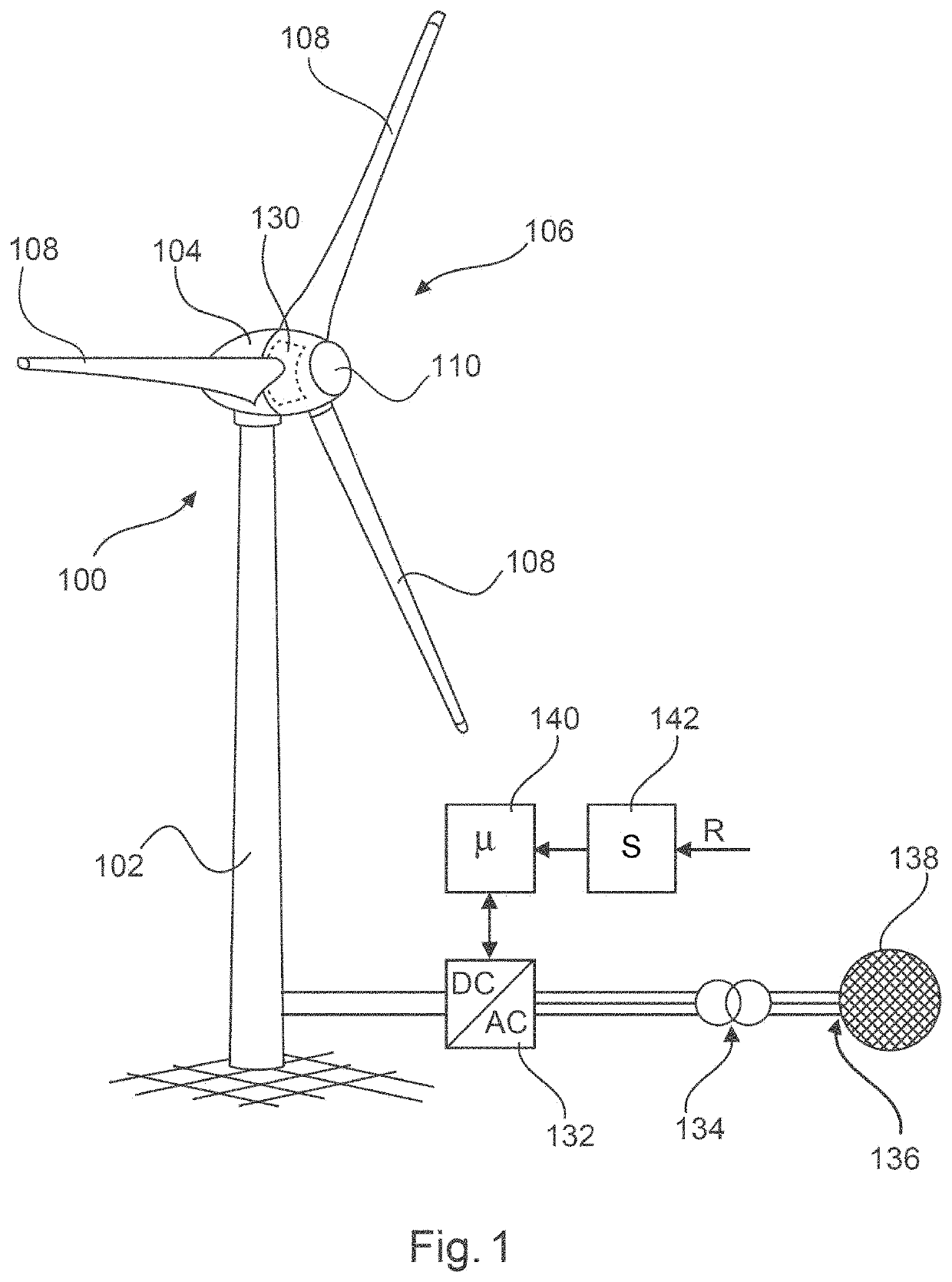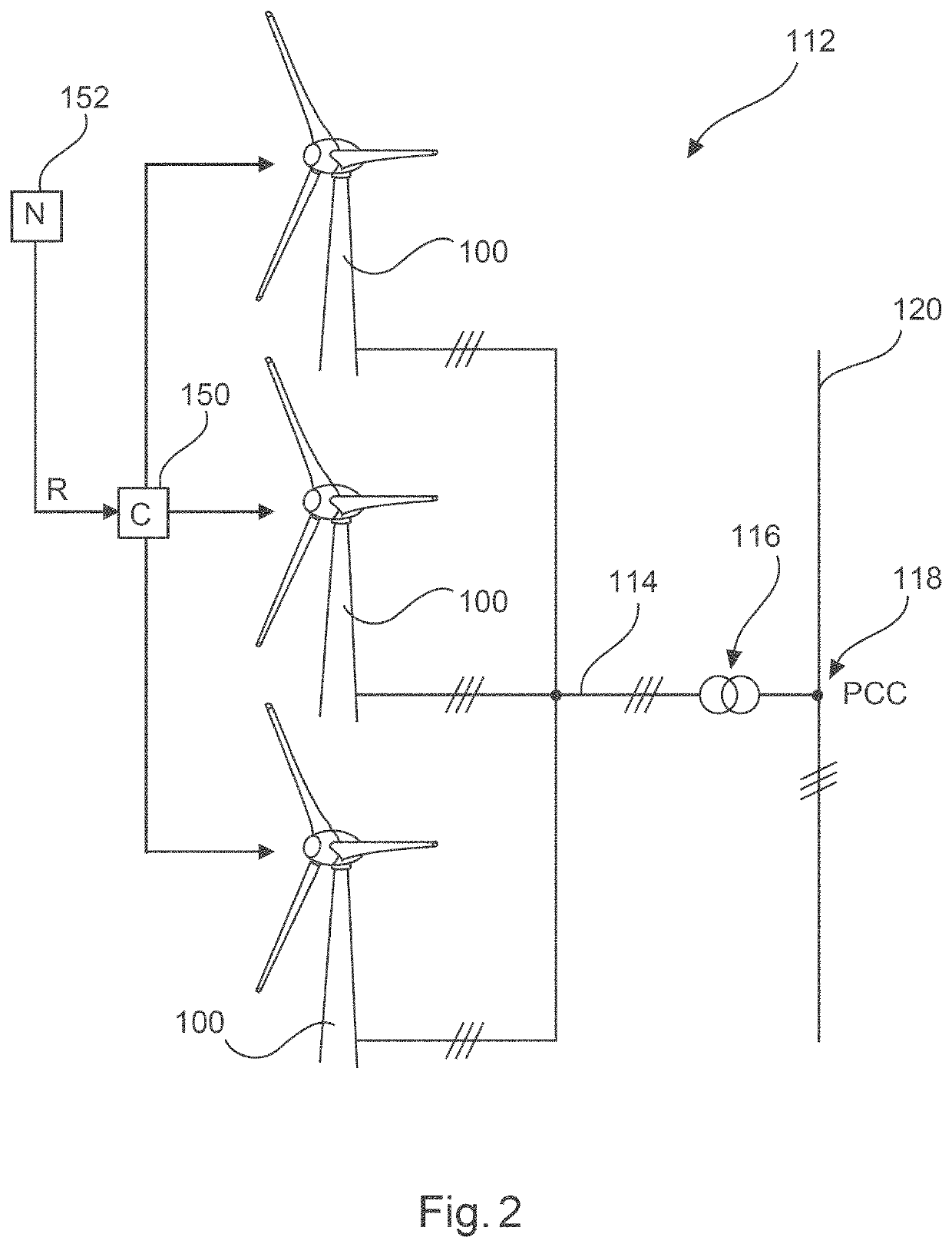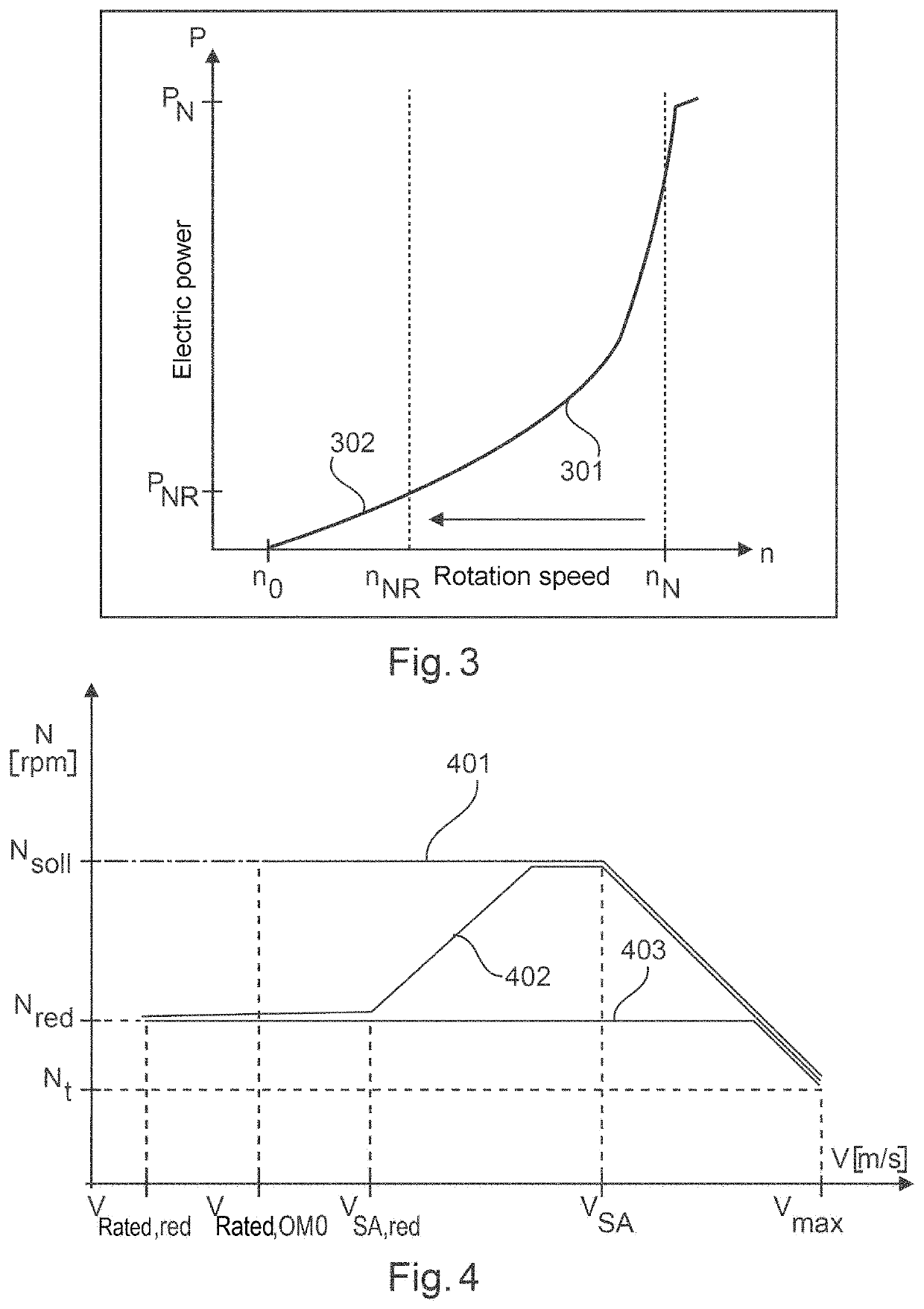Reduced power operation of a wind turbine
- Summary
- Abstract
- Description
- Claims
- Application Information
AI Technical Summary
Benefits of technology
Problems solved by technology
Method used
Image
Examples
Embodiment Construction
[0075]FIG. 1 shows a wind power installation 100 with a tower 102 and a nacelle 104. A rotor 106 with three rotor blades 108 and a spinner 110 is arranged at the nacelle 104. The rotor 106 when operating is set into rotary movement by the wind, thereby driving a generator in the nacelle 104.
[0076]In FIG. 1, a generator 130 that generates electric power and transfers it to an inverter 132 is moreover indicated in the nacelle 104, wherein alternating current previously generated by the generator was rectified. The inverter 132 feeds into the electrical supply grid 138 via a transformer 134 at a grid connection point 136.
[0077]A control apparatus (controller) 140 that operates the inverter 132, which forms a feed apparatus, is provided for control of the inverter 132. For a reduced-power operating mode, a reduction signal R can be supplied to a switching apparatus (processor, computer or controller) 142. The switching apparatus 142, which can also be part of the control apparatus 140, ...
PUM
 Login to View More
Login to View More Abstract
Description
Claims
Application Information
 Login to View More
Login to View More - R&D
- Intellectual Property
- Life Sciences
- Materials
- Tech Scout
- Unparalleled Data Quality
- Higher Quality Content
- 60% Fewer Hallucinations
Browse by: Latest US Patents, China's latest patents, Technical Efficacy Thesaurus, Application Domain, Technology Topic, Popular Technical Reports.
© 2025 PatSnap. All rights reserved.Legal|Privacy policy|Modern Slavery Act Transparency Statement|Sitemap|About US| Contact US: help@patsnap.com



